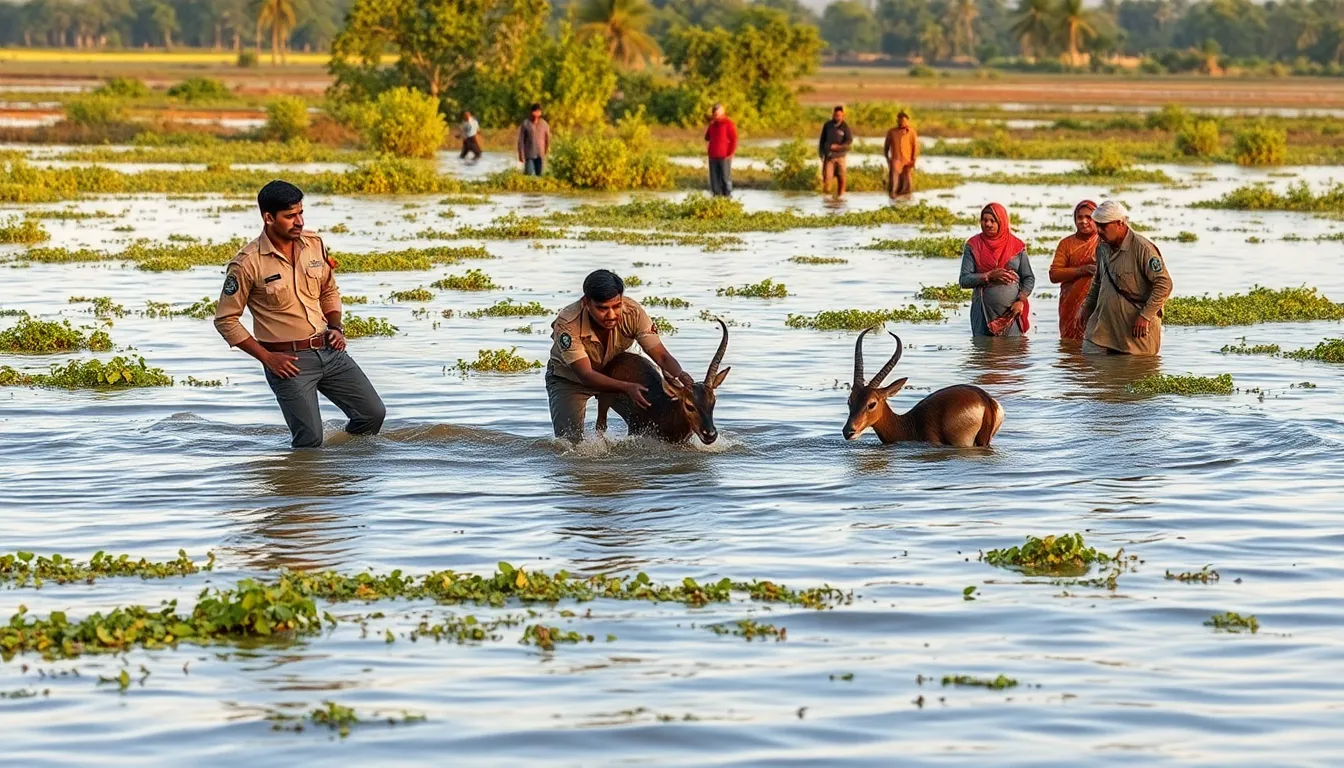In the Bhal region of Gujarat, heavy rains have caused significant distress to both humans and wildlife. The recent downpours have led to dangerous flooding, especially in areas surrounding the Velavadar Blackbuck National Park. Tragically, seven blackbucks have died due to the flooding, while three others were rescued by officials.
The rain has created a dire situation for blackbucks in the national park and nearby villages. The floods have swept through their habitats, leading to loss of life. Over the past two days, forest department officials reported that seven blackbucks have perished. The bodies of four of these animals were discovered during inspections in revenue areas, including Ganeshgadh, Savai Path, and Devaliya. Furthermore, two more bodies were found the following day, indicating that they had drowned in the rising waters.
One blackbuck was injured and fell victim to hunting dogs after being trapped in the floods. The forest department continues to search these areas, as there is a possibility of discovering more deceased blackbucks. Thankfully, most blackbucks have managed to escape to higher ground, but those trapped in low-lying areas remain at risk due to the ongoing water accumulation.
The Bhal region is known for its unique geographical features, including flat land that can easily flood. It is also renowned for its blackbuck population, which is a significant draw for nature lovers and conservationists alike. The area is home to a variety of wildlife and plant species, making it an ecological treasure. However, the recent rains have posed a severe threat to this delicate ecosystem.
Local farmers and residents have also felt the impact of the flooding. The heavy rains have made agricultural activities difficult and have caused damage to crops. Farmers in the region primarily grow crops like wheat and cotton, which require careful management during the rainy season. The sudden influx of water can lead to soil erosion and other issues that threaten their livelihoods.
Officials are urging residents to stay alert and report any stranded animals or further flooding incidents. The forest department is committed to protecting wildlife and will continue their rescue efforts. The community is hopeful that the remaining blackbucks can find safety and that the ecosystem will recover from this natural disaster.
As the floodwaters recede, it is crucial for local authorities to monitor the situation closely. They must ensure that both wildlife and the agricultural community receive the support needed to bounce back from this crisis. The tragic loss of these blackbucks serves as a reminder of the vulnerabilities faced by wildlife in the face of extreme weather events. Conservation efforts will need to be strengthened to protect these animals from future threats, whether from natural disasters or human encroachment.
The Bhal region is not just a habitat for blackbucks; it reflects the interconnectedness of nature and agriculture. The challenges faced by wildlife can directly affect the community and vice versa. As the forest department works to rescue and rehabilitate stranded animals, the resilience of both the blackbucks and the farmers will be tested. This situation calls for a collaborative approach to ensure that the Bhal region can thrive in harmony with its natural inhabitants.


Leave a Reply